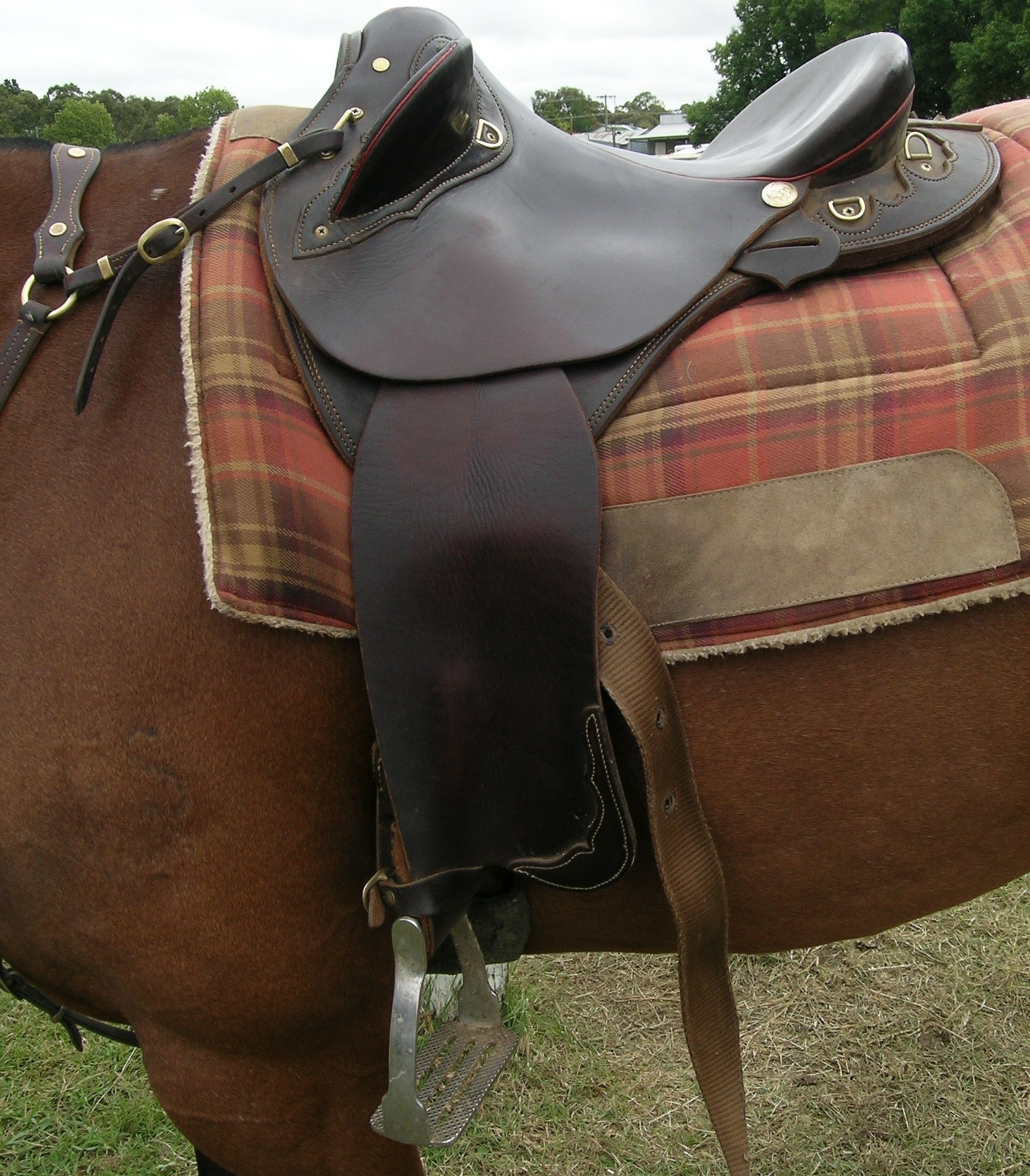

A wider 2″ leather became popular and did solve some of these problems. The downside is that the leathers sometimes pinched and the buckles could rub on the inner leg. The narrow 1 1/4″ leathers were very flexible and allowed the rider great freedom of movement.

If the rider falls and is being dragged, there is a good chance the stirrup leather would pull off the stirrup bar, thus releasing the rider being dragged. It has been mounted on a steel hook bar, which is a huge safety factor. Will the fender on an Australian Stock saddle feel and work the same as on a Western Saddle?Īustralian Stock Saddles have traditionally had a stirrup leather 1 1/4″ wide. It is light weight, strong and perfectly balanced. Secondly, if you are seeking an advantage in horse sports, then just like the jockeys in the horse race, you will find that using the light weight Australian stock saddle will not only be better for your horse long term, but it will give you and your horse a real edge in any competitive horse sport. Firstly its vastly more comfortable for your horse and less likely to exert pressure on the weaker backbone area of a valuable horse. The same principle applies to the position of an Australian stock saddle.
#Australian endurance saddle full
They know that by taking their weight off the horses back, the horse can use its full strength and athletic ability to propell itself forward rather than supporting the rider weight. When the horse is in full gallop and heading for the finish line, the jockeys stand in the stirrups and lean forward along the horses neck. The saddle on a race horse is made in such a way as to be up on the horses shoulder. Take note the next time you are at the race track. Instead of the rider weight being primarily being exerted on the back bone and associated skeletal frame, it is on the much stronger shoulder section. This means that when girthed up the saddle is in a more forward position and the rider weight is more over the horses shoulders. The rigging dees on an Australian stock saddle are situated a little forward of centre. The position of the rigging dees on a Western saddle tend to place the saddle further down the horses back when compared to the position an Australian stock saddle takes on a horses back. It does have a flank girth facility, but if you are not going to rope out of a saddle you really dont need a flank girth. The position of the rigging dees and flank girth is great for the purpose it was designed for and that is roping.Īn Australian stock saddle generally speaking does not have a horn. If the saddle did not have a flank girth it would lift at the back and most likely, the saddle would pull off the horse.

When this doesnt happen the saddle takes the brunt of the force and the fact that the front and rear girth are set far apart prevents this from happening. When the steer hits the end of the rope the force exerted along the rope tends to pull the horse off its feet. During roping enormous stress is placed on the saddle. This arrangement works very well for that type saddle. The rear flank girth is strongly attached and with this combination the saddle is very hard to pull off a horse and that is exactly what this saddle is ideal for. The rigging dees on western saddles are for the most part, set at the front with a flank girth at the rear.Ībove – The front rigging Dee is well forward under the swell. Because of this they all have a horn for roping. The American Western saddle in its many forms all derive from the original concept of a saddle you can rope cattle with. You have ridden western, but want to know will an Australian Stock Saddle suit you? Trevor James explains the difference.


 0 kommentar(er)
0 kommentar(er)
